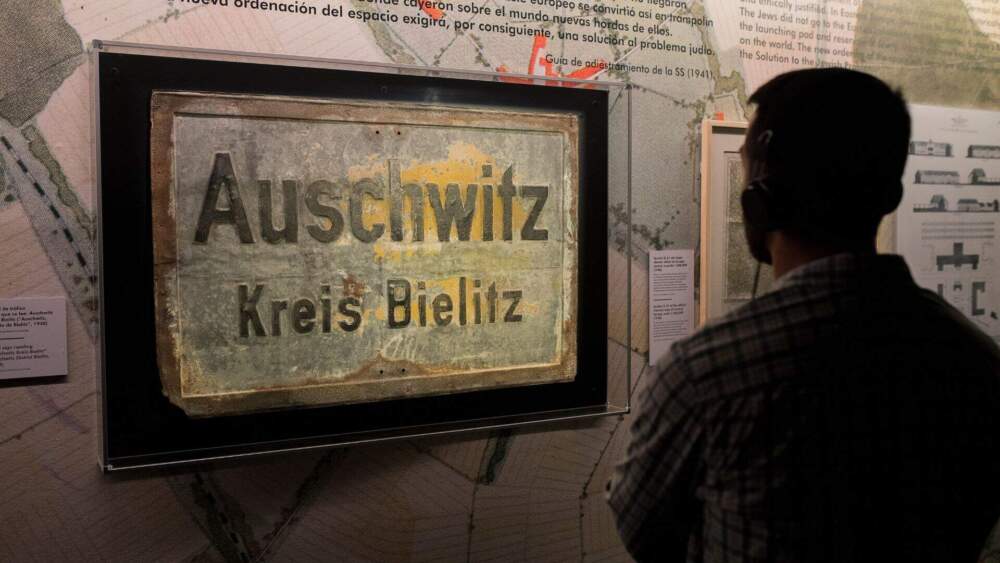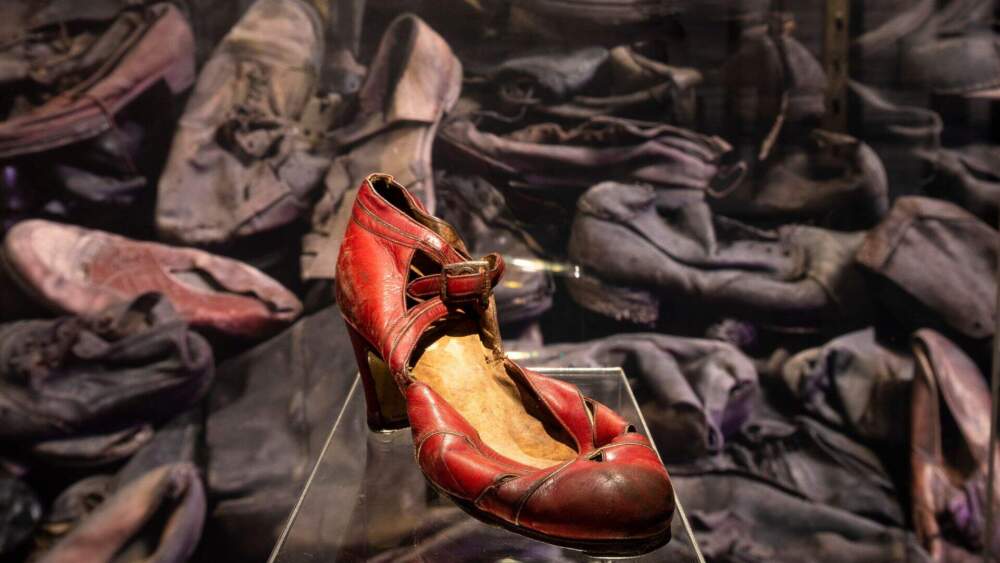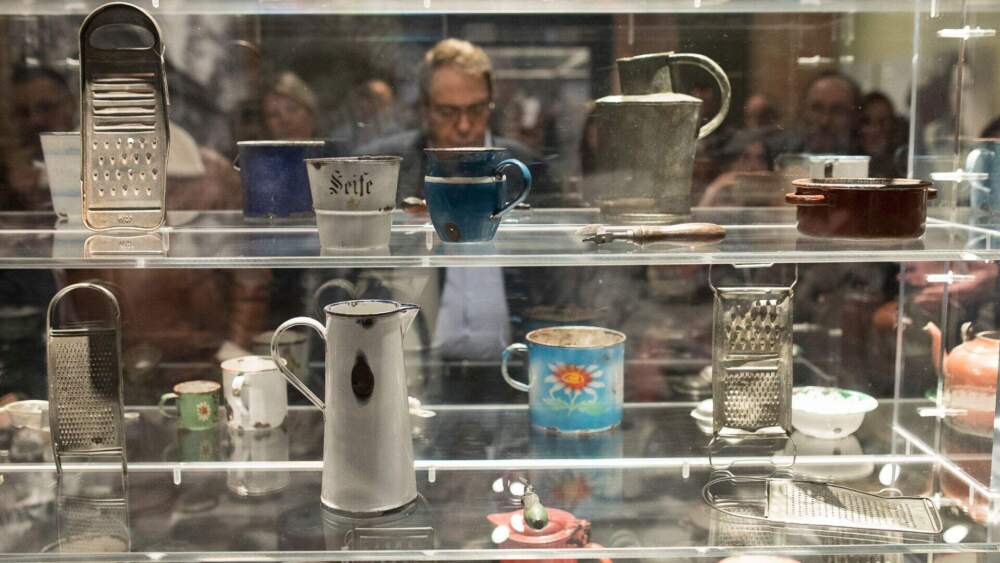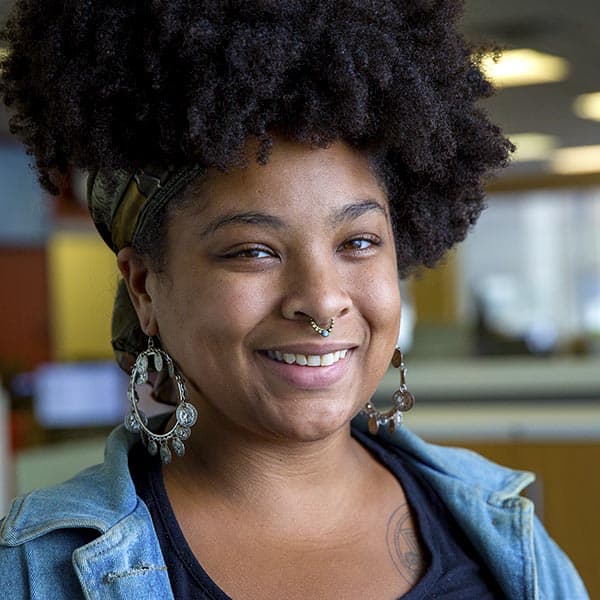Advertisement
A new Holocaust exhibit in Boston confronts a painful history

Nearly 80 years ago, World War II was finally coming to an end. In January of 1945, the largest Nazi concentration camp, Auschwitz, was liberated by the Soviet army — around 7,000 people were freed, though many would later die due to malnutrition and other medical complications.
And liberation came too late for the 1.1 million people whose lives were claimed by Auschwitz in the years it operated.
For the first time, hundreds of Holocaust artifacts are in Boston as a part of the international exhibition, “Auschwitz. Not Long Ago. Not Far Away.”
Running through Sept. 2 at Saunders Castle at Park Plaza, the exhibit explores the painful legacy of one of history’s darkest chapters.
Created by Spanish company Musealia in collaboration with Auschwitz-Birkenau Memorial, “Auschwitz. Not Long Ago. Not Far Away” comes at a time when religious and racial tensions are high. This is the first traveling exhibition on Auschwitz.

“An exhibition this substantial and comprehensive on Auschwitz ... is unlikely to ever be assembled again,” said Luis Ferreiro, director of Musealia.
Seven years ago, he was inspired to explore the idea of an exhibit after reading "Man's Search for Meaning," a book that chronicles author Viktor Frankl's time spent in Nazi concentration camps. Frankl and his family were sent to Auschwitz.
“Listening to their stories and understanding how these events could happen is the best action we, as citizens of the world, can take against the reoccurrence of such a horrific event,” Ferreiro said.
This is the first time a collection of this size has been brought together to tell the story of the Holocaust — the exhibit features 700 artifacts from the Auschwitz-Birkenau Memorial and over 20 other museums. Objects include materials and suitcases packed by Auschwitz deportees, a gas mask and even large portions of an original prisoner’s barrack.
“These artifacts call upon guests to prevent the dehumanization of others by building a future free from antisemitism, racism and all ideologies of hatred,” said Piotr Cywinski, director of the Auschwitz-Birkenau Memorial.
Upon entering "Auschwitz. Not Long Ago. Not Far Away," visitors are guided chronologically through the exhibit via an audio-tour device, starting with an exploration of how so many people bought into genocidal, anti-Semitic, racist political rhetoric.
Founded in 1919, the National Socialist German Workers’ Party, or the Nazi party, helmed by Adolf Hitler, would go on to kill an estimated six million Jewish people under the guise of restoring the German nation to its former glory. The total number of people killed throughout the Holocaust, including other minority groups and prisoners of war, is closer to 11 million.
Auschwitz was the largest of the many concentration camps established by the Nazis after the beginning of World War II. It received its first detainees in 1940 and operated for five years until 1945.
Before Soviet forces liberated Auschwitz in January, nearly 60,000 prisoners were forced on death marches. Around 15,000 people died on those marches. The war would eventually end months later in May when German forces surrendered in Berlin.

Divided into four parts, co-curator Paul Salmons says this exhibition "will show objects related to the perpetrators themselves... it shows the personal items of the victims and tells the stories of the individual people, the families that were torn apart, the communities that were devastated."
Items, like a bright red woman's shoe and a child's doll, bring detail to the lives of those killed at Auschwitz. They help concretize and contextualize a history that many have only experienced through history books. Other objects, like the barracks and operating table, underscore the dehumanization necessary to commit such atrocities like the ones that happened at Nazi concentration camps.
John Norman, the president of World Heritage Exhibitions who is presenting the exhibit locally, points out that “Auschwitz. Not Long Ago. Not Far Away" will help viewers confront the sobering reality of humanity's past. This confrontation is what raises awareness and with awareness comes the ability to choose differently in the future.
"Within the echoes of history's shadows, lies a vital truth; to remember, to learn and to honor," he said.
This is the exhibit’s New England premiere, and Boston will likely be the only East Coast stop during its 14-city tour.

"Auschwitz. Not Long Ago. Not Far Away" is on view at the Castle at Park Plaza through Sept. 2.
